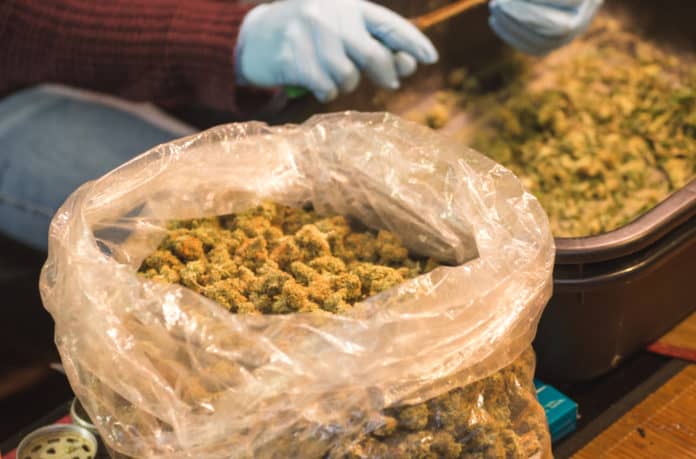SALEM, Ore. – It started in 2017 with a bumper crop of Oregon cannabis that had, by early 2019, reached a surplus of 1.3 million pounds of dried flower.
Experts calculate that’s enough weed to keep the cannabis-smoking population of Oregon well supplied until 2025. Writing for the Potlander blog in Willamette Week, reporter Katie Shepard hilariously observed that the surplus is enough flower to “fill 589,670,081 one-gram pre-rolls.”
Two laws recently were passed by the Oregon legislature that may help unblock the logjam.
Oregon lawmakers passed Senate Bill 582 on June 11, which would allow Oregon’s governor to enter into agreements with other legal cannabis states to transport, distribute, and sell cannabis products produced in Oregon. However, the new law is largely symbolic because the bill does not allow transport until federal officials decriminalize cannabis for transport across state lines. The bill is awaiting Governor Kate Brown’s signature.
“The surplus of cannabis products we have in our state proves that without even trying we can supply a market far bigger than the local one here in Oregon,” Representative Rob Nosse (D-Portland) said, according to the Salem Statesman Journal. “We’re ready to go, all we need is for the feds to get out of the way and for us to pass this bill.”
At the end of April, Senate Bill 218 was passed that allows the Oregon Liquor Control Commission, which oversees state cannabis licensing, to withhold or refuse licenses based on “demand for marijuana,” for a period of time the commission deems necessary. Initially, Oregon had allowed out-of-state applicants for growers’ licenses without a cap on how many licenses were issued.
According to reports on media portal JDSupra.com, OLCC Director Steve Marks testified in late April the commission would continue to process applications and assign applicants; at the time, applicants had been assigned through June 11, but up to 100 applications still in the queue might be delayed or some remained unassigned until the licensing moratorium is lifted.
Supporters of the legislation said the changes are needed to reflect the rapidly developing regulatory landscape for legal cannabis. They argue because Southern Oregon is part of the Emerald Triangle and legendary for producing high quality crops, the current number of growers will be sustained only if cannabis is marketed like regional local wines, to expanding, connoisseur markets in the U.S.
Advocates also suggest excessive supplies of perishable cannabis will only push some growers into black markets, if they are not allowed to distribute to other legal states. Limiting the number of available growers licenses may also encourage new growers into growing illegally, some pundits warned. Legal growers that made considerable investments into their facilities to meet regulatory requirements are now struggling to stay competitive, with prices for a gram of cannabis hovering near $5, retail. In California, the largest U.S. market, gram prices are typically between $10-$15 for one gram.
The latest actions by Oregon will allow the state’s cannabis businesses to rapidly expand into out-of-state markets, if (or when) transport is allowed by federal authorities, especially if other legal states like California, Washington, or Nevada have not by then updated regulations for distribution and transport.
Some Republican representatives from Oregon said federal officials have not signaled any pending change in policy for cannabis, which is an illegal substance, by federal law.
“The Oregon cannabis industry does not have an oversupply problem, they have a problem of an artificially restricted market,” Nosse added.













